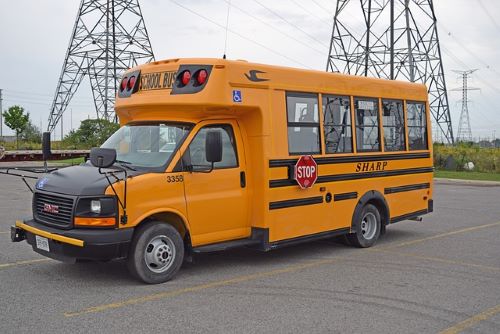Simplifying the Mountain of Paperwork in School Bus Transportation
published on March 29, 2024 by Sonia Mastros
BusBoss, School Buses,, School Bus Technology, School Bus Fleet Management, School bus industry, school transportation management
During the early 1900s…states distributed funds to school districts based on “flat grants…” one basic dollar amount per student to each district regardless of its wealth or need. -The Process of Education Reform

Flat grants were easy for the public, parents, and schools to understand, but districts with high-need or low-income populations received the same funding as wealthier areas. Needs-based funding is a solution that can account for the variables in educational program administration, including school transportation.
It’s not “all about money,” but to provide educational opportunities for U.S. children, schools rely on funding. In turn, they must account for their spending. Reporting is an organizational duty.
An acronym that is no longer easily recognized is “SBRP” for “school bus routing problem.” SBRP was coined circa 2000s to describe school administrators’ student transportation processes and reporting challenges:
- Data preparation
- Bus stop selection
- Bus route preparation
- School bell times
- Route scheduling
Then and now, schools must provide transportation services reports. The organization of information for annual school bus transportation scheduling and accountability took several employees not hours – but months – to assemble:
- Actual daily ridership
- After-school transportation
- Average daily ridership
- Bus types
- Type A
- A-1
- A-2
- Type B
- Type C
- Type D
- Alternate vehicle
- Multifunctional activity bus
- Non-conforming van
- Passenger car/van
- School van
- Type A
- Contracted services
- Equipment leases
- Utilities
- DAEP (disciplinary alternative education program) transportation
- Daily mileage
- Days of operation
- Depreciation fixed/capital assets
- Driver training/licensing
- Eligible riders roster
- ESY (extended school year) transportation
- Fuel
- Fleet # buses
- General route-related expenses
- Half-day/pre-k transportation
- Mileage
- Partial-year routes
- Route changes
- Route descriptions
- SOP (standard operating procedures)
- Special-program student transportation
- Costs
- Days of operation
- Eligible riders roster
- Mileage
- Number of buses
- Special route services
- Student ridership to-from school (home-to-school)
- Student transportation for specialized academics
- Students living 2+ miles from campus
- Students living 2+ miles from campus and in hazardous traffic or high-risk/violent area
- Total mileage
- Transportation employee salaries/benefits
- Non-professional
- Professional
- Transportation-related employee expenses
- Insurance
- Registrations/subscriptions
- Travel
- Transportation to/from grandparents’ or child-care facilities
- Vehicle inspection
- Vehicle maintenance
- Vehicle repairs
…and more. To describe the collection of required information as a “mountain of paperwork” is a simplification at best.
For more than 100 years, school transportation management was unchanged. This led to so many SBRPs that parents began demanding technology solutions.
Improved School Transportation Safety and Savings
School bus routing technology can pay for itself within one year. Improved route efficiency often reduces the number of buses you need for even better student transportation with lower mileage and reduced fuel costs. You can reduce the amount of time students spend on buses.
You can eliminate the mountain of paperwork. BusBoss school bus routing software retains crucial historical records to ensure your school district receives timely, accurate reimbursements.
BusBoss is a founding father of school transportation solutions. Call 866-740-8994 or contact BusBoss.
We’ve all had technology snafus; in fact, 94% of school superintendents discovered their technology investment failed to meet the key performance indicators they required. What technology have you tried that flopped? Share with us.






